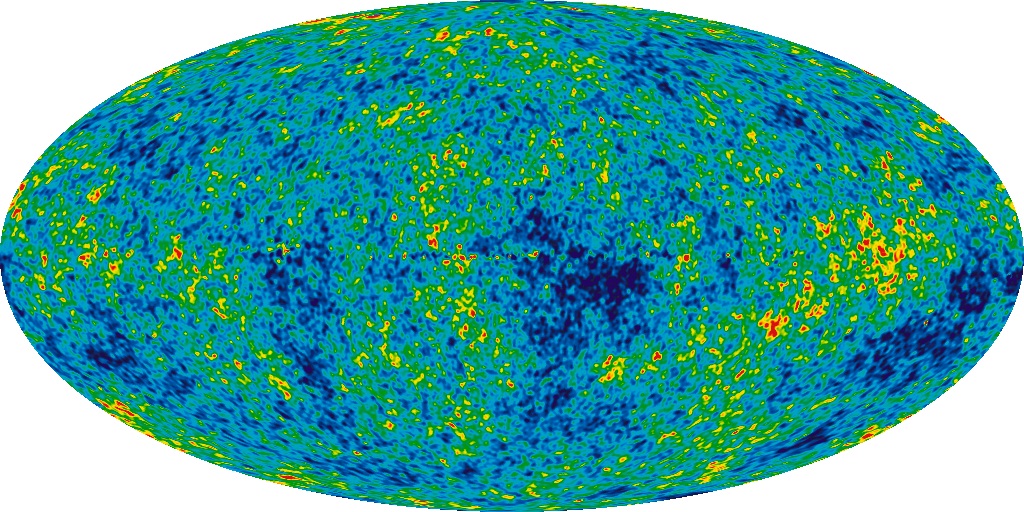New 'Baby Picture' of Universe Unveiled

Astronomers have released a new "baby picture" of the universe.
The all-sky image draws on nine years' worth of data from a now-retired spacecraft dubbed the Wilkinson Microwave Anisotropy Probe (WMAP).
WMAP launched in 2001 and from its perch a million miles away from Earth (in the direction opposite the sun) it scanned the heavens, mapping out the afterglow of the hot, young universe with unprecedented accuracy.
"We are just a speck in the vastness of the universe, so it is amazing that we have the ability to answer fundamental questions about the vast universe around us, but the WMAP team has done just that," Charles Bennett, an astrophysicist at Johns Hopkins University who heads the team, wrote in an email to SPACE.com. "It was possible because we can detect and study the ancient light, the oldest light in the universe."
The image maps the temperature of the radiation left over from the Big Bang, at a time when the universe was only 375,000 years old. It shows a temperature range of plus-or-minus 200 microKelvin, with fluctuations in the so-called cosmic microwave background radiation appearing here as color differences.
These patterns allow astronomers to predict what could have possibly happened earlier, and what has happened in the billions of year since the universe's infancy. As such, the spacecraft has been instrumental in pushing forward cosmological theories about the nature and origin of the universe.
Among other revelations, the data from WMAP revealed a much more precise estimate for the age of the universe — 13.7 billion years — and confirmed that about 95 percent of it is composed of mind-boggling stuff called dark matter and dark energy. WMAP data also helped scientists nail down the curvature of space to within 0.4 percent of "flat," and pinpoint the time when the universe began to emerge from the cosmic dark ages (about 400 million years after the Big Bang.)
Get the Space.com Newsletter
Breaking space news, the latest updates on rocket launches, skywatching events and more!
The probe retired two years ago, and the WMAP science team is now releasing its final results, based on a full nine years of observations.
"The universe encoded its autobiography in the microwave patterns we observe across the whole sky," Bennett said in a statement. "When we decoded it, the universe revealed its history and contents. It is stunning to see everything fall into place."
Follow SPACE.com on Twitter @Spacedotcom. We're also on Facebook and Google+.
Join our Space Forums to keep talking space on the latest missions, night sky and more! And if you have a news tip, correction or comment, let us know at: community@space.com.

Megan has been writing for Live Science and Space.com since 2012. Her interests range from archaeology to space exploration, and she has a bachelor's degree in English and art history from New York University. Megan spent two years as a reporter on the national desk at NewsCore. She has watched dinosaur auctions, witnessed rocket launches, licked ancient pottery sherds in Cyprus and flown in zero gravity on a Zero Gravity Corp. to follow students sparking weightless fires for science. Follow her on Twitter for her latest project.









